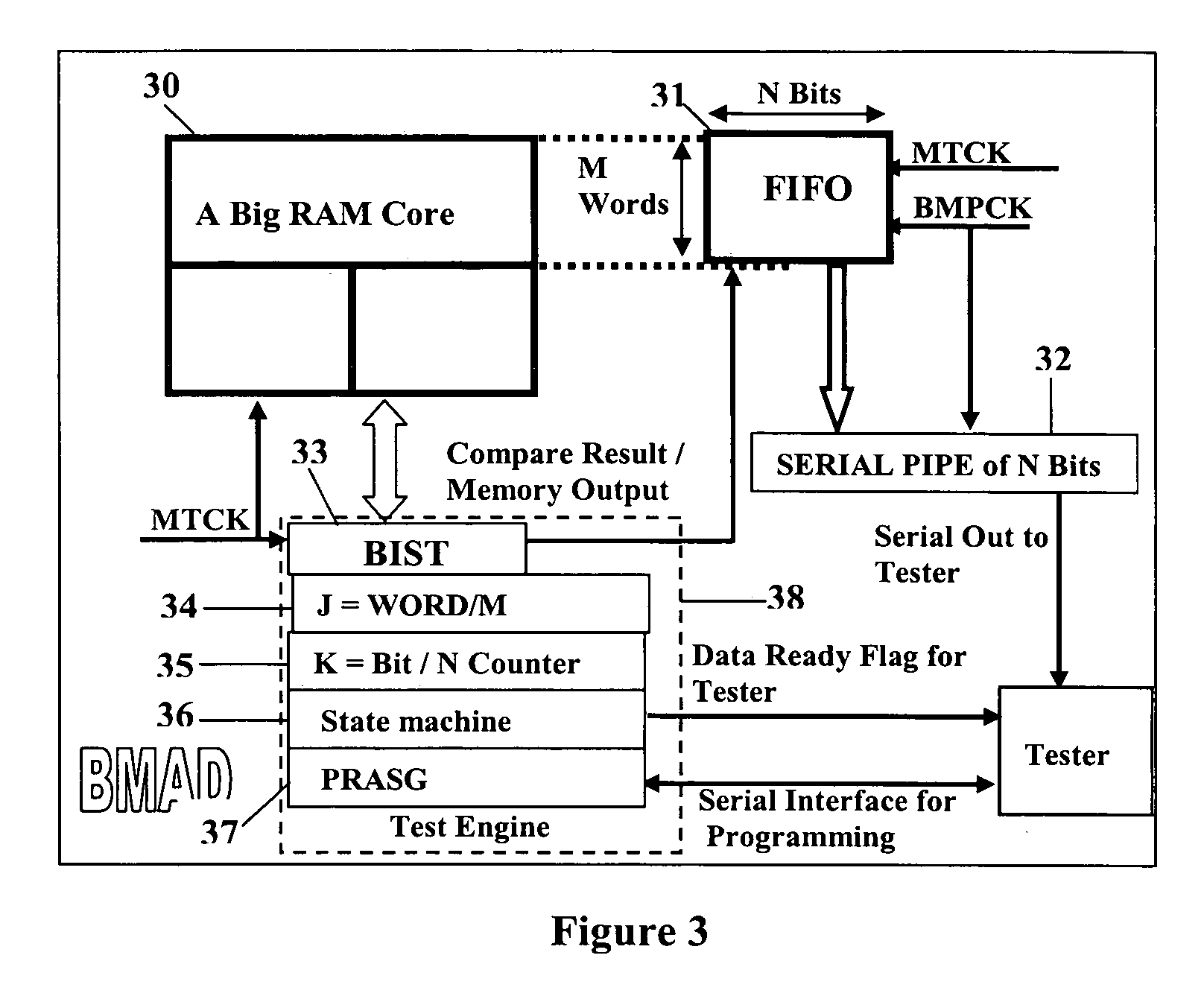Method and system for BitMap Analysis System for high speed testing of memories
- Summary
- Abstract
- Description
- Claims
- Application Information
AI Technical Summary
Benefits of technology
Problems solved by technology
Method used
Image
Examples
Embodiment Construction
[0033] In the current approach of analyzing memory faults and creating a bitmap, a FIFO is used as an interface between a BIST and a tester. The invention divides a big memory core into many small logical memory cores and generates a bit map for the same that can be stored in a smaller FIFO.
[0034]FIG. 3 shows a block diagram of an embodiment of a Bit Map Analysis System (BMAS) of the invention. It contains a RAM core 30, BIST 33 that contains the March Element Opcode Loader and is linked to RAM core 30, a FIFO 31 with M words and N data bits connected to a Serial Pipe 32 to convert N bits to 1-bit information per tester clock. The embodiment also includes a counter 34 which counts up to (Total Words) / M, a counter 35 which counts up to (Total Data Bits) / N, a state machine 36 to organize all the activities and manage the handshake signals with the tester and a Programmable Read Address Sequence Generator (PRASG) 37 for configuring the address sequence from tester through a serial int...
PUM
 Login to View More
Login to View More Abstract
Description
Claims
Application Information
 Login to View More
Login to View More - R&D
- Intellectual Property
- Life Sciences
- Materials
- Tech Scout
- Unparalleled Data Quality
- Higher Quality Content
- 60% Fewer Hallucinations
Browse by: Latest US Patents, China's latest patents, Technical Efficacy Thesaurus, Application Domain, Technology Topic, Popular Technical Reports.
© 2025 PatSnap. All rights reserved.Legal|Privacy policy|Modern Slavery Act Transparency Statement|Sitemap|About US| Contact US: help@patsnap.com



